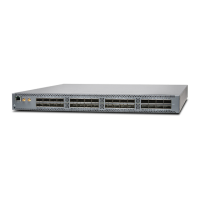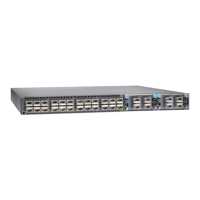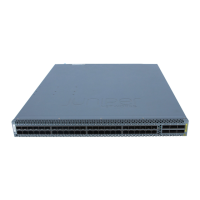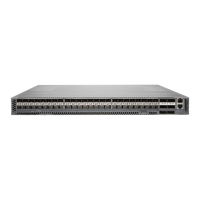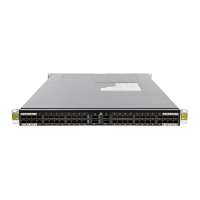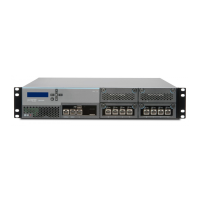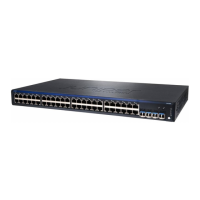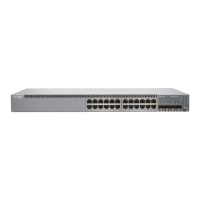NOTE: Automatic VCP conversion only works when the interfaces on both ends of the link
are not already configured as VCPs.
When adding a QFX4300 leaf device to a QFX5100 VCF, the 40-Gbps QSFP+ interfaces on
EX4300 switches are configured as VCPs, by default. You must, therefore, delete the VCP
configuration on the 40-Gbps QSFP+ interface using the request virtual-chassis vc-port
delete command before interconnecting it into the VCF. Then the automatic VCP conversion
process is invoked and converts the link into a VCP.
A device joins the VCF immediately without a reboot if you do not need to change the fabric mode or
mixed mode settings.
9. Install the VCF feature licenses.
For a VCF deployment, we recommend having two license keys for redundancy—one for the device in
the primary Routing Engine role and the other for the device in the backup Routing Engine role.
To purchase a feature license for VCF, contact your Juniper Networks sales representative
(https://www.juniper.net/us/en/contact-us/sales-offices). The Juniper sales representative will provide
you with the feature license files and license keys. You will be asked to supply the chassis serial number
of your switch; you can obtain the serial number by running the show virtual-chassis command.
After obtaining the licenses, follow the instructions in Generating License Keys.
10. (Optional) The VCF forwards broadcast, unknown unicast, and multicast (BUM) traffic among the
members of the VCF using multicast distribution trees (MDTs). By default, the VCF creates MDTs for
every member of the VCF with that member as the root node of an MDT. If this default MDT creation
method is not optimal for your installation, you can control which members become MDT root nodes.
The set virtual-chassis member member-id fabric-tree-root configuration statement preempts the
default method of creating MDTs, and specifies whether or not a member in a VCF can be an MDT
root node. If this statement is configured for one or more members, MDTs are created only with the
specified members as root nodes. See Understanding Traffic Flow Through a Virtual Chassis Fabric and
fabric-tree-root for more details on why you might want to choose this MDT creation method instead
of the default method. Note that if you decide to use this option, we recommend that you specify all
the spine members (and only spine members) as MDT root nodes. In an autoprovisioned VCF, this
option should be configured for all spine devices (independent of the member’s role) after the VCF is
running and any additional spine device member IDs have been automatically assigned.
If desired, configure the spine devices in the VCF to be fabric MDT root nodes. For example, if you
have four spine members in your VCF, where you configured the first two spine devices to be members
0 and 1, and during autoprovisioning, the two additional spine members were automatically assigned
to be members 4 and 5:
372
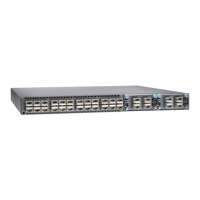
